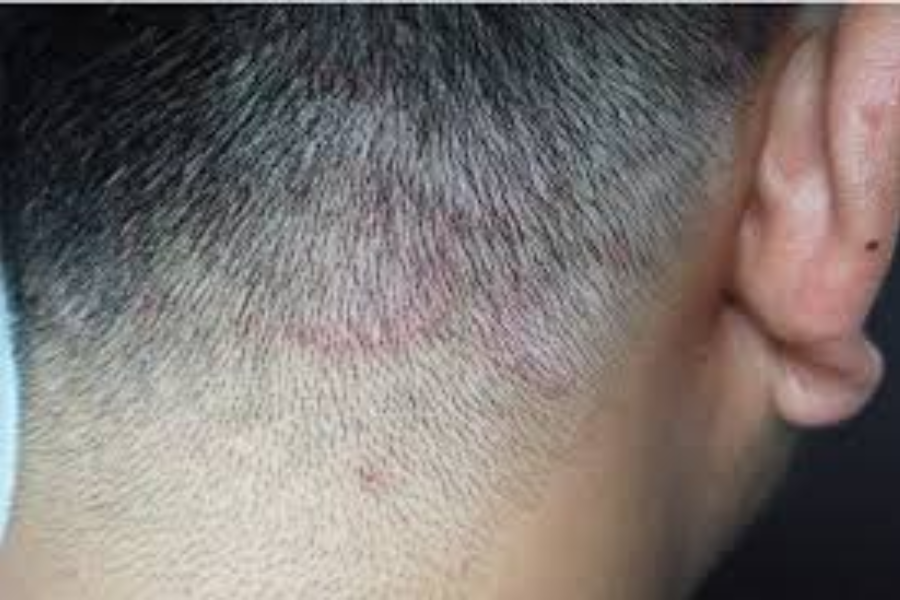Fungal infections of the scalp are commonly known as tinea capitis or scalp ringworm. These affect both children and adults.
Such infections occur when fungi get inside the hair follicles and the skin on the scalp, giving birth to multiple symptoms and possible complications if not treated in time.
Causes
- Direct contact with infected individuals
- Sharing personal items
- Contact with infected animals
- Exposure to contaminated surfaces
Symptoms
- Itchy, scaly patches: These usually show up on the scalp and may cause discomfort.
- Round, red, or gray patches of hair loss: Infected areas may show observable hair thinning or complete hair loss.
- Brittle or broken hair shafts: Hair may break easily at the scalp; you may notice visible black dots where the hair has broken off.
- Swollen, painful areas on the scalp: In severe cases, the scalp can become inflamed and tender to the touch.
- Fever and swollen lymph nodes: This is rare, some individuals may go through systemic symptoms like fever or swollen lymph nodes.
Diagnosis
- Physical examination: Your doctor may carry out a thorough examination of the scalp.
- Microscopic examination: Hair and skin samples can be examined under a microscope.
- Wood’s lamp examination: Some fungi are recognizable in UV light.
- Fungal culture: A sample of the infected area may be cultured.
Treatment
Treatment for scalp fungal infections usually is a combination of oral and topical antifungal medications.
Your doctor will decide the treatment based on your age and the severity of your issues.
Medications
Oral antifungals are commonly prescribed:
- Terbinafine (Lamisil)
- Itraconazole
- Posaconazole (Noxafil)
- Griseofulvin
Topical treatments like antifungal shampoos can manage symptoms and stop the infection from spreading.
Shampoos with selenium sulfide, zinc pyrithione, or coal tar are the most recommended.
Additional Measures
While taking medications, some other measures can also help to manage and prevent scalp fungal infections:
- Regular washing and keeping the scalp clean and dry can improve your chances of not contracting the infection.
- Preventing the use of others’ combs, brushes, hats, etc., stops the spread.
- If pets are the source of the infection, they should get appropriate treatment from a vet.
- Monitoring the infection’s progress keeps track of medicine effectiveness and reduces the likelihood of recurrence.
Complications and Long-Term Effects
If left untreated, scalp fungal infections can be the reason for some complications, for example:
- Permanent hair loss or scarring
- Secondary bacterial infections
- Spread of the infection
Preventing Scalp Fungal Infections
If you want the scout fungal infection to not come back, or you don’t get it in the first place, you will need to adopt good hygiene practices and be very cautious in your surroundings – especially if the exposure is high.
Some good recommendations are:
- Practicing good hygiene: Keep washing your hair on schedule, this is the most simple thing to avoid infection.
- Avoiding the sharing of personal items: Do not share combs, brushes, or hats, this stops the transmission of the infection.
- Keeping the scalp dry: Fungi love moist homes, so keeping the scalp dry can discourage an infection.
When to Seek Medical Attention
If at all you notice any of the above mentioned symptoms on the scalp, you need to get in touch with the healthcare provider as soon as possible.
Sometimes, the symptoms do not go away despite OTC treatments – you must not ignore getting medical advice, or you will risk getting complications.
Final Thoughts
Scalp fungal infections can be really uncomfortable and may lead to hair loss if not taken care of promptly.
Knowing the causes, symptoms, and treatment options lets you take steps that can save you from these infections and seek the appropriate care.
Early diagnosis and treatment are basic for a full recovery.
Keep an eye for more news & updates on Qiuzziz.Blog!
